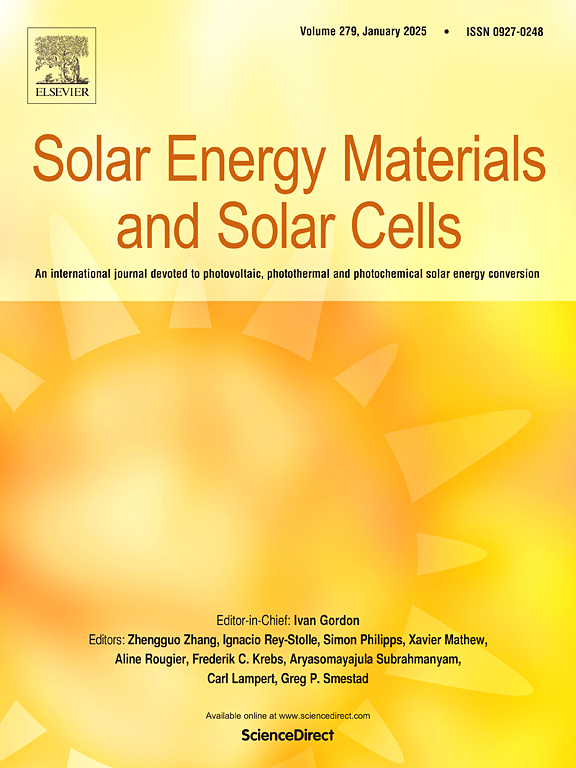High-performance metasurface based daytime radiative cooler designed by random forest method
IF 6.3
2区 材料科学
Q2 ENERGY & FUELS
引用次数: 0
Abstract
The consumption of fossil fuels is the primary source of the energy crisis and global warming, which have emerged as the world's most pressing issues. As time goes, the previous methods of designing radiative coolers are no longer viable due to the difficulty in achieving the desired performances. In this paper, the machine learning (ML) approach known as the Random Forest (RF) regression model is utilized to forecast and enhance the performance of a metasurface-based daytime radiative cooler. The proposed radiative cooler achieved an average absorptivity/emissivity of 99.69 % in the first atmospheric window (AW1) and 98.12 % in the second atmospheric window (AW2), with an Ultra-wide perfect absorption bandwidth of 19.9 μm. It is also estimated that the solar band has a reflection of 94.50 %. The Random Forest (RF) regression model has a Mean Absolute Percentage Error (MAPE) of 0.4955 %, which is far less than any other machine learning algorithms. Besides this, for better understanding of the absorption mechanism, the electric and magnetic fields distribution theory is investigated at different absorption peaks. Further the structure is polarization and incidence angle insensitive and show a good absorption performance even at larger angle of incidence. The proposed radiative cooler device got a net cooling power of 170.65 Wm-2 at ambient temperature. This innovative method of enhancing the designing process might make the radiative cooler device considerably more precise.
求助全文
约1分钟内获得全文
求助全文
来源期刊

Solar Energy Materials and Solar Cells
工程技术-材料科学:综合
CiteScore
12.60
自引率
11.60%
发文量
513
审稿时长
47 days
期刊介绍:
Solar Energy Materials & Solar Cells is intended as a vehicle for the dissemination of research results on materials science and technology related to photovoltaic, photothermal and photoelectrochemical solar energy conversion. Materials science is taken in the broadest possible sense and encompasses physics, chemistry, optics, materials fabrication and analysis for all types of materials.
 求助内容:
求助内容: 应助结果提醒方式:
应助结果提醒方式:


